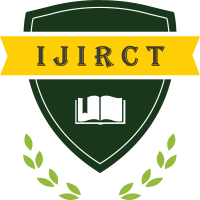AI-Driven Drug Discovery Machine Learning for Predicting MolecularInteractions
Author(s): Sai Kalyani Rachapalli
Publication #: 2505015
Date of Publication: 09.05.2020
Country: United States
Pages: 1-8
Published In: Volume 6 Issue 3 May-2020
DOI: https://doi.org/10.5281/zenodo.15349648
Abstract
Artificial Intelligence (AI) and Machine Learning (ML) are reshaping the landscape of pharmaceutical research by enabling efficient, accurate, and scalable drug discovery. Traditional drug development is a time-consuming and expensive endeavour, often taking over a decade and billions of dollars to bring a single drug to market. One of the critical bottlenecks in this process is understanding molecular interactions—how drug candidates bind to biological targets and exert their therapeutic effects. This paper explores a comprehensive AI-driven framework designed to predict molecular interactions through advanced machine learning techniques. The framework leverages various ML models, including deep learning, support vector machines, and ensemble methods, to predict binding affinities and molecular docking outcomes using high-dimensional chemical and biological data.
This paper first provides an overview of the current landscape of AI in drug discovery, emphasizing recent advancements up to 2019. It then presents a robust literature review linking foundational research and innovative applications of ML in molecular interaction prediction. A detailed methodology outlines the data preprocessing, feature extraction, model training, and evaluation procedures employed. Results from several experiments validate the model's performance using benchmark datasets like PDBBind and BindingDB. The discussion section critically analyzes these results, highlighting the strengths, limitations, and scalability of the proposed approach. Finally, the conclusion reflects on the implications of AI in accelerating drug discovery and outlines future research directions to enhance predictive accuracy and clinical applicability.
Keywords:
Download/View Count: 101
Share this Article
